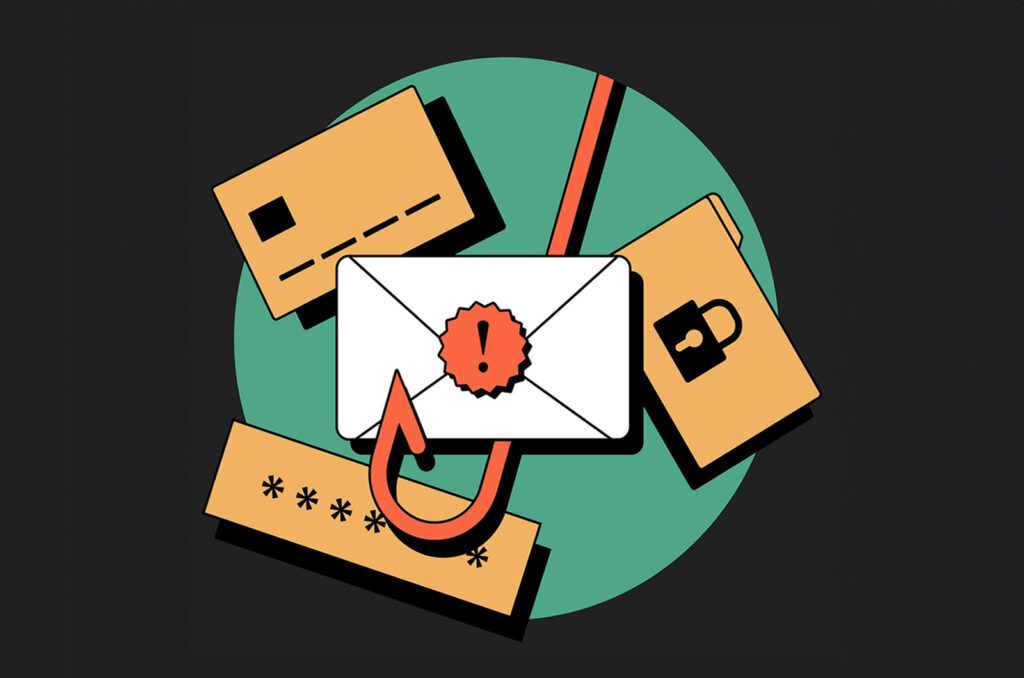Phishing scams have targeted companies of all sizes since the early days of the internet. Over time, attackers have gotten smarter and their tactics more advanced, making it easy for phishing emails to slip past even the most observant users. In fact, according to IBM’s 2023 report, phishing is the second most prevalent cause of data breaches. It is also the most expensive!
Thankfully, with the right tools, it’s possible to quickly identify and respond even to the most sophisticated attacks. Here’s what you should know about protecting your business from phishing.

1. Know what a phishing scam looks like
What makes phishing so challenging to identify is the fact that it can take many shapes and forms. Here are a couple of warning signs you should watch out for:
- The sender’s e-mail address doesn’t have a legitimate domain name. Check whether the domain address matches the written name of the organisation from which the message claims to come. For instance, if all messages from ‘Real Architectural Firm’ are typically coming from ‘employee@realarchitecturalfirm.com‘, a phishing email might be sent from something like ‘employee@realarchitecturalfirmco.com‘.
- Using a generic greeting. If the message begins with a generic greeting like ‘dear’ or ‘customer’, it is more likely to be a phishing attempt than an authentic message.
- Attempts to redirect you to a website that doesn’t match the sender’s domain. Take a look at the message body. If it includes links to a potentially malicious site, it’s most likely a phishing attempt.
- The email fails DMARC checks (and/or SPF, DKIM). If a message ends up in your spam folder, chances are it didn’t pass one of these authentication checks, which is a red flag.
2. Regularly install software updates
Updating your software can seem like a hassle, especially when you have a ton on your plate and any downtime takes away from your work. However, having up-to-date software is critical to protecting your business from phishing attacks. In fact, some would even say it is the most important step you have to take.
According to a study conducted by ServiceNow and Ponemon Institute, 60% of breaches occurred because attackers took advantage of an unpatched vulnerability for which a patch was already available. The lesson here? While keeping track of all the necessary patches for your devices and software can be time-consuming (and sometimes annoying), if you don’t stay on top of updates, your business is at risk of serious IT issues.
3. Use multi-factor authentication
One of the best defences against phishing is multi-factor authentication (MFA). Even if cybercriminals manage to compromise your account, they will need an additional form of authentication, such as a biometric scan, a PIN, a security token, or some other tool).
To add an extra layer of security, make sure all your employees use complex and unique passwords. Nowadays, there are plenty of tools available that help generate complex passwords, which are much more difficult to crack.
4. Educate your team (and audience)
Statistics show that human error is the biggest contributor to any data breach. Sending personal information to the wrong recipient, accidentally releasing sensitive data or using weak passwords – these are all the problems you risk facing unless your staff has clear policies on handling data.
While raising awareness is easier than truly changing user behaviour, even basic training can ensure that your employees are an asset rather than a threat.
5. Check your digital footprint
Did you know that many cybercriminals take advantage of publicly available information about your company to make their messages more convincing? That’s right. Your digital footprint and what you share online are critical aspects of your cybersecurity. Think about these questions:
- What do your customers need to know about your business? Are there any details available that might be useful for potential attackers?
- What information do your contractors, partners, and suppliers give away about your business online? Is it necessary for this information to be public?
6. Set up firewalls
Over the past years, the network security firewall market has grown exponentially and is expected to grow even more (reaching $6.89 billion this year). That’s no surprise – firewalls are nowadays one of the most important tools for protecting your business against unauthorised network traffic, which can later turn into phishing attempts.
If you already have a firewall in place, don’t forget to conduct regular security audits. This will help you identify vulnerabilities and ensure your configuration complies with the best security policies.
7. Don’t fall for the temptation of pop-ups
There’s nothing more irritating than pop-ups interrupting your work session. But pop-ups aren’t simply annoying – they are often part of phishing scams and can be linked to malware.
The easiest solution to tackle this problem is to install free ad-blocker software that will automatically block the majority of pop-ups. If that doesn’t help and some pop-ups still manage to reveal themselves on your screen, look for an ‘x’ button in one of the corners.
Final thoughts
Most business owners have learned to dodge spam emails, but phishing messages can look deceptively credible. And to make matters worse, phishing can be delivered by all kinds of means, from phone calls to perfectly legitimate websites.
While educating yourself on cybercrimes and recognising red flags is important, we encourage you to take one step further and invest in your cybersecurity!
By partnering with Ingenious, you’ll have peace of mind, knowing your valuable data is well-protected and your business is following all important security standards (including web content filtering, security awareness training, multifactor authentication, phishing simulations, and more).
Ready to make your company more secure? You can contact our team or follow our blog for more tips and tricks on best IT security practices.

